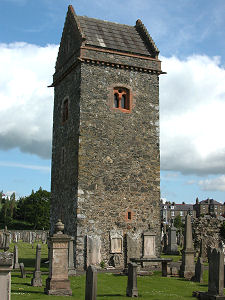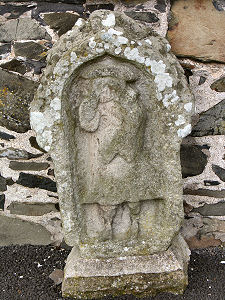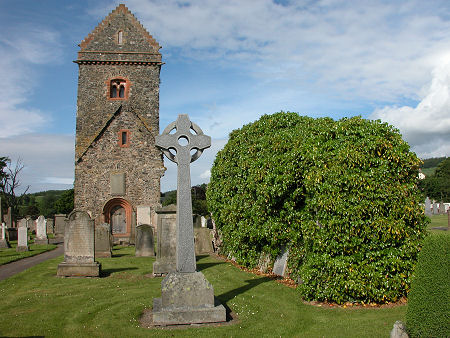 St Andrews Tower and the Remains of the Church |
The A72 into Peebles from the west follows the valley of the River Tweed. Immediately to its north and on the very western edge of the town is a stone tower standing in the middle of a graveyard. This is St Andrew's Tower, said to be the oldest standing building in Peebles.
This was originally the tower of St Andrew's Parish Church, which was consecrated by Bishop Jocelin of Glasgow in 1195. The church he consecrated probably stood on the site of an earlier church, or more likely a series of earlier churches, dedicated to St Mungo, which stretched back over five centuries to the establishment of Christianity in Peebles in the 600s.
In 1543 St Andrew's became a collegiate church. This meant that a local landowner endowed it with sufficient funds for a group, or college, of clerics to take up residence and pray for the eternal souls of the benefactor and his family.
They didn't have long to do so, however, because in 1548, during Henry VIII of England's Rough Wooing of Mary, Queen of Scots, an English army largely destroyed Peebles. St Andrew's was burned down and never rebuilt. After the Reformation of 1560, Cross Kirk, previously an abbey church just half a mile to the east of St Andrew's, became Peebles' new parish church.
The ruins of St Andrew's seem to have been left as the focal point of what became the main graveyard in Peebles. In 1858 the ruins were consolidated and drastically restored. The result was that when MacGibbon and Ross visited St Andrew's during the research for their Ecclesiastical Architecture of Scotland, published in 1896, they concluded that "It has been so completely restored or transformed by the late Dr Chambers that it is now of no interest whatsoever as a specimen of the ancient architecture of Scotland."
Perhaps, but on the other hand, he did at least ensure the tower is still standing. Today all that remains of St Andrew's is the tower and an ivy-clad section of nave wall. The surrounding graveyard is home to a number of interesting old gravestones carrying a range of symbols of mortality. Some of the oldest gravestones and carvings have been set into, or stand next to, the base of the tower itself.
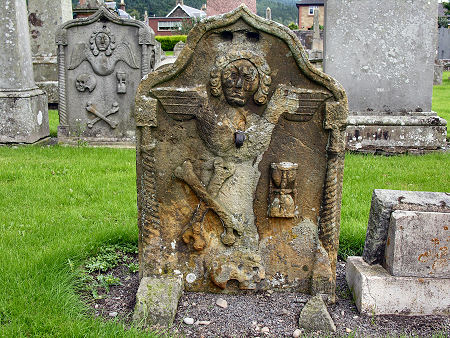 Two of the Old Gravestones |
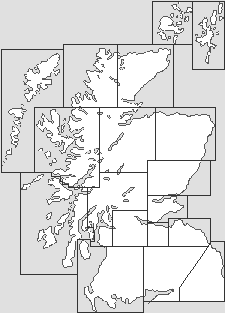
|
|
|
Visitor InformationView Location on MapGrid Ref: NT 246 406 What3Words Location: ///captions.strumming.candle |
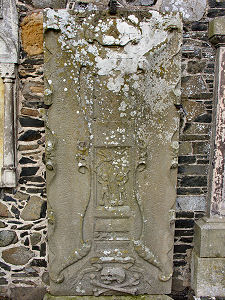 Old Stone Set Into Base of Tower |
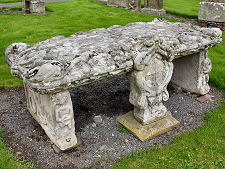 Highly Decorated Table Stone |
